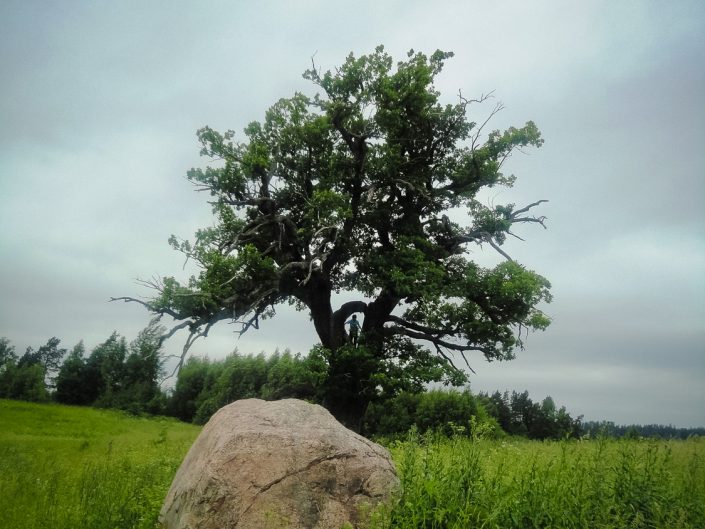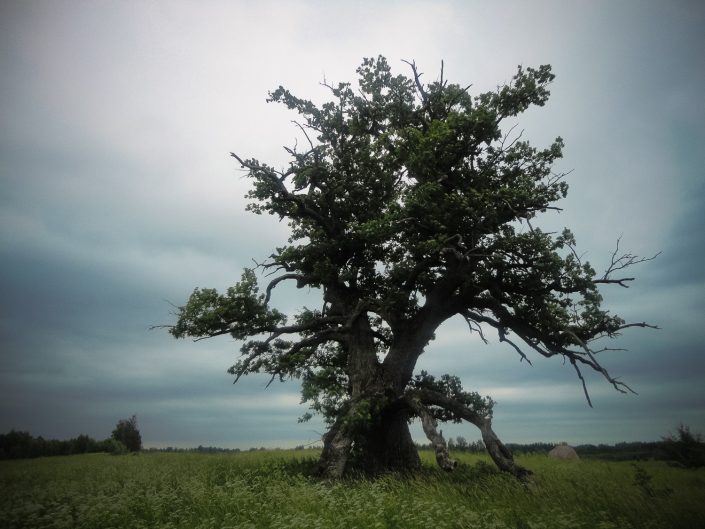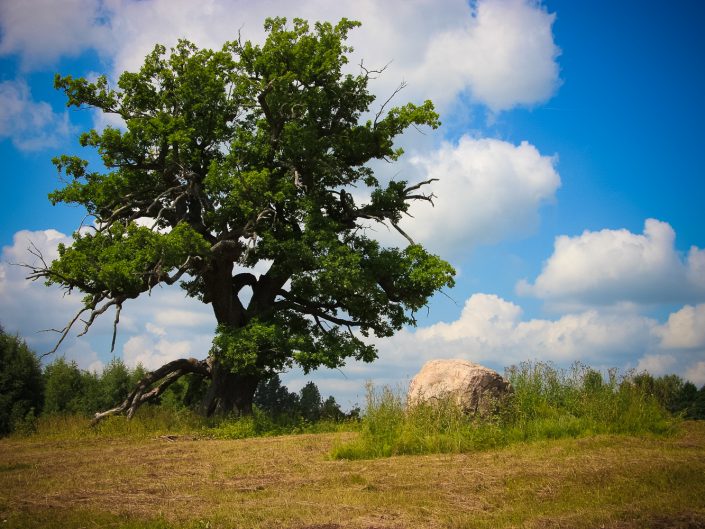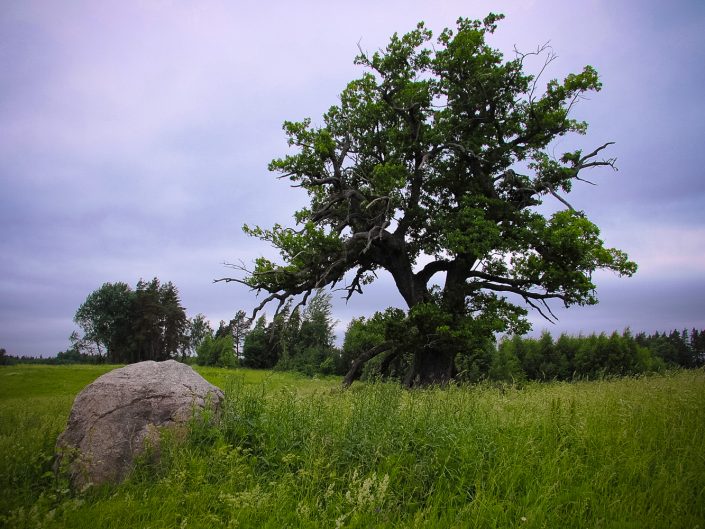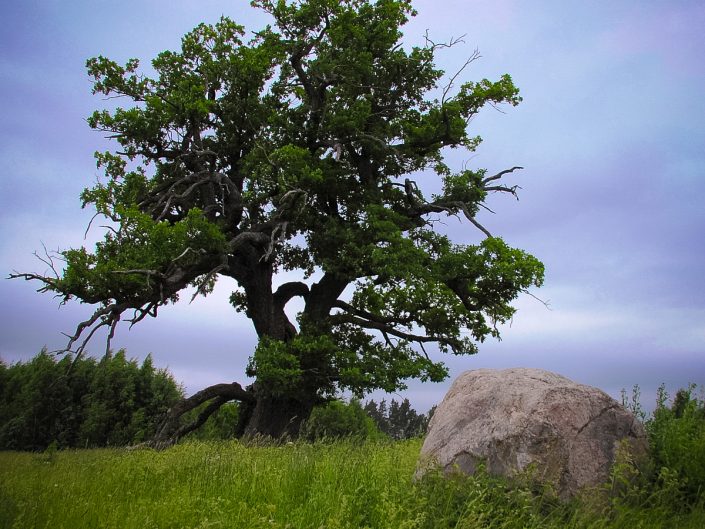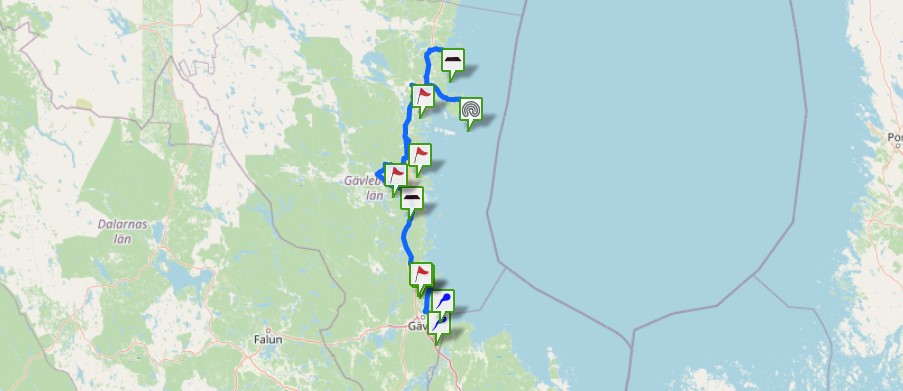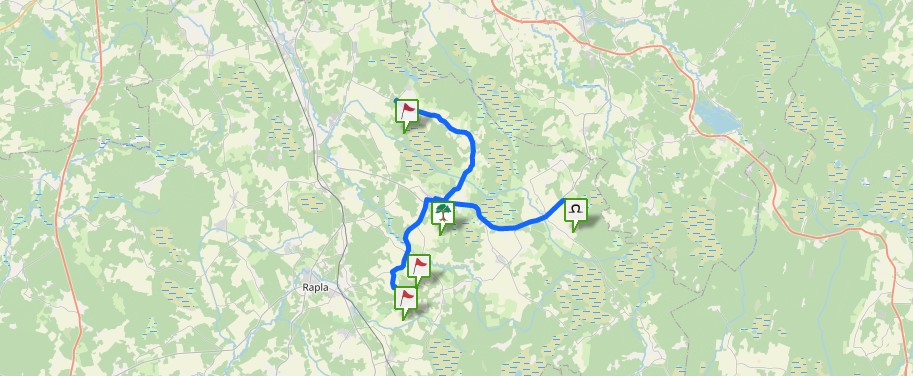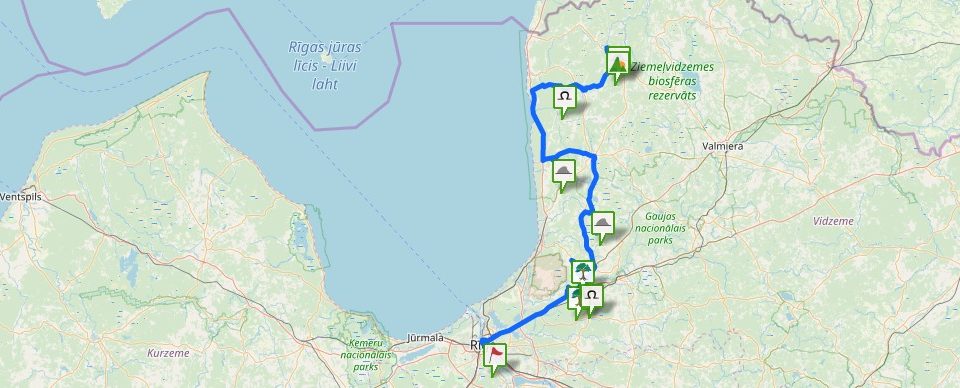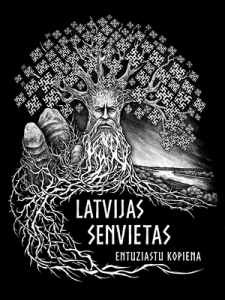In 1994 it was included into the list of state archaeological heritage as an ancient cult site (State Inspection for Heritage Protection, No 2341). News about the Kalnaegles Oak was published for the first time by Andris Ziemelis in the journal “Jaunā nedēļa” in March 1926, but a biolgosit Edvards Jansons indicated the circumference of the oak’s trunk in the 4th issue of the journal “Daba un Zinātne” of 1937 — at a height of half a meter above the ground it was 5.7 meters. In 1977 the oak was included into the secular tree list as nature heritage. Its age is 300 years. (G. Eniņš. 100 Most Secular and Holiest (100 Dižākie un svētākie). 2008.) Nearby is the Pārkalne Money Stone, the Mēru manor house with a park, the Bilska Lake, the Sūcis Lake and the Mēru Lake.
In former times the local elderly people called the Kalnaegles Oak the “Grand Father”, they brought flowers to it. Nowadays the oak is useful for forecasting the weather, namely, one can tell the weather according to leaf blooming and falling. “They used to bring flowers to the oak in ancient times. Oak leaves, acorns, and bark were used for healing those afflicted.” (Latvian National Museum of History, Smiltene Parish. Report by H. Skujiņa, 26.09.1928.) “Near the Egļi-Velde homestead of the Smiltene Parish there is an old, large oak called by elderly people the Grand Father. At the oak they used to sacrifice in former times. Nowadays it is useful for weather forecasting. If in autumn the oak’s leaves do not fall for a long time, the next spring would be late.” (H. Skujiņa, Smiltene Parish)
